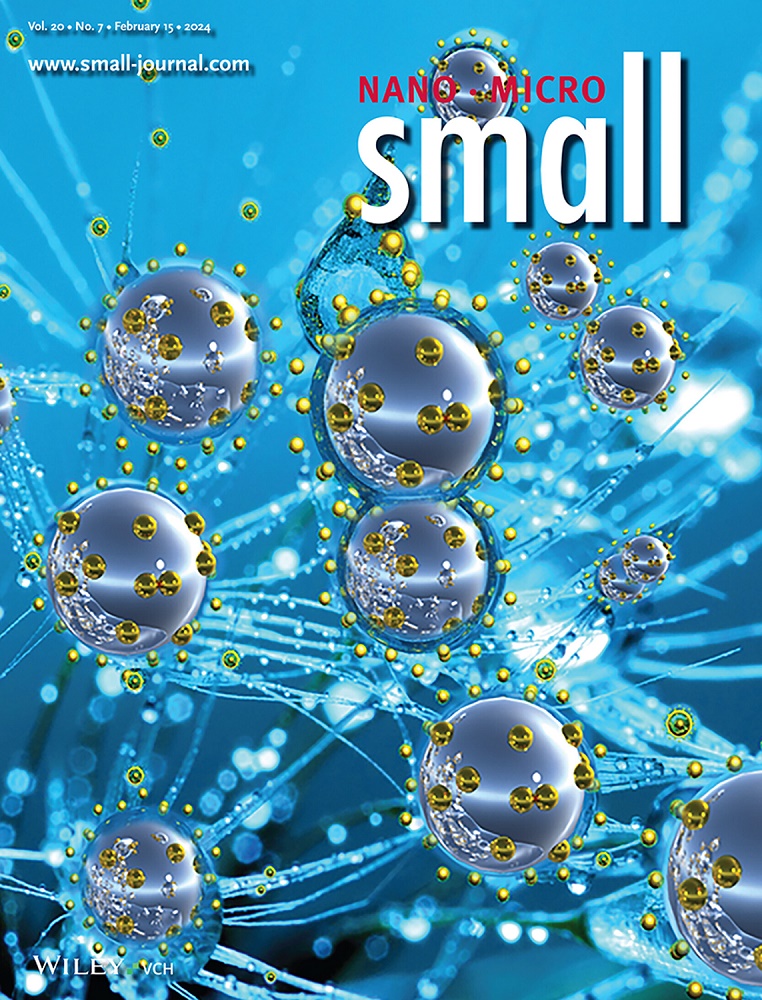微波驱动的高取向M(111)表面金属(M)薄膜的晶体排列。
IF 12.1
2区 材料科学
Q1 CHEMISTRY, MULTIDISCIPLINARY
引用次数: 0
摘要
生产具有可控晶体取向的金属薄膜对于2D材料(石墨烯、氢氮化硼、金属硫族化合物等)外延生长的催化剂、传感器和衬底至关重要。传统的生产排列金属膜的方法需要特定的衬底和高温处理,这限制了它们对薄膜和可接近的金属物种的适用性。本文介绍了微波退火作为一种诱导金薄膜晶体取向的新技术。与热退火相比,微波退火可以在几分钟内使Au(111)面在更低的温度下有效地面外对齐,而不考虑衬底的类型,也不涉及薄膜脱湿。通过实验和数值研究研究了这种取向的潜在机制,揭示了mw诱导的残余应力和应变场的作用,与热退火相比,这些残余应力和应变场额外促进了Au(111)平面暴露于表面。高取向Au(111)薄膜被用作其他(111)取向金属(Ag, Al和Cu)薄膜异质外延生长的应变释放衬底。这项工作为实现晶体排列的金属薄膜提供了一种可扩展的策略,这种薄膜可用于传感器和用于异质外延的应变释放衬底。本文章由计算机程序翻译,如有差异,请以英文原文为准。
Microwave-Driven Crystallographic Alignment for Producing Metal (M) Thin Films with Highly-Oriented M(111) Surface.
Production of metal thin films exhibiting controlled crystallographic alignment is essential for catalysts, sensors, and substrates for the epitaxial growth of 2D materials (graphene, h-BN, metal chalcogenides, etc.). Conventional methods to produce aligned metal films necessitate specific substrates and high-temperature processing, which limits their applicability to thin films and accessible metal species. This study introduces microwave (MW) annealing as a novel technique to induce crystallographic alignment in Au thin films. MW-annealing enables effective out-of-plane alignment of the Au(111) facet within a few minutes at lower temperatures than thermal annealing, irrespective of the type of substrate and without concerns related to the thin film dewetting. The underlying mechanism of this alignment is investigated through experimental and numerical studies, revealing the role of MW-induced residual stress and strain fields, which additionally promote exposure of the Au(111) planes to the surface in comparison to thermal annealing. The highly-oriented Au(111) film is used as a strain-relieved substrate for heteroepitaxial growth of other (111) aligned metal (Ag, Al, and Cu) thin films. This work offers a scalable strategy for achieving crystallographically aligned metal thin films that can be used for sensors and a strain-relieved substrate used in heteroepitaxy.
求助全文
通过发布文献求助,成功后即可免费获取论文全文。
去求助
来源期刊

Small
工程技术-材料科学:综合
CiteScore
17.70
自引率
3.80%
发文量
1830
审稿时长
2.1 months
期刊介绍:
Small serves as an exceptional platform for both experimental and theoretical studies in fundamental and applied interdisciplinary research at the nano- and microscale. The journal offers a compelling mix of peer-reviewed Research Articles, Reviews, Perspectives, and Comments.
With a remarkable 2022 Journal Impact Factor of 13.3 (Journal Citation Reports from Clarivate Analytics, 2023), Small remains among the top multidisciplinary journals, covering a wide range of topics at the interface of materials science, chemistry, physics, engineering, medicine, and biology.
Small's readership includes biochemists, biologists, biomedical scientists, chemists, engineers, information technologists, materials scientists, physicists, and theoreticians alike.
 求助内容:
求助内容: 应助结果提醒方式:
应助结果提醒方式:


